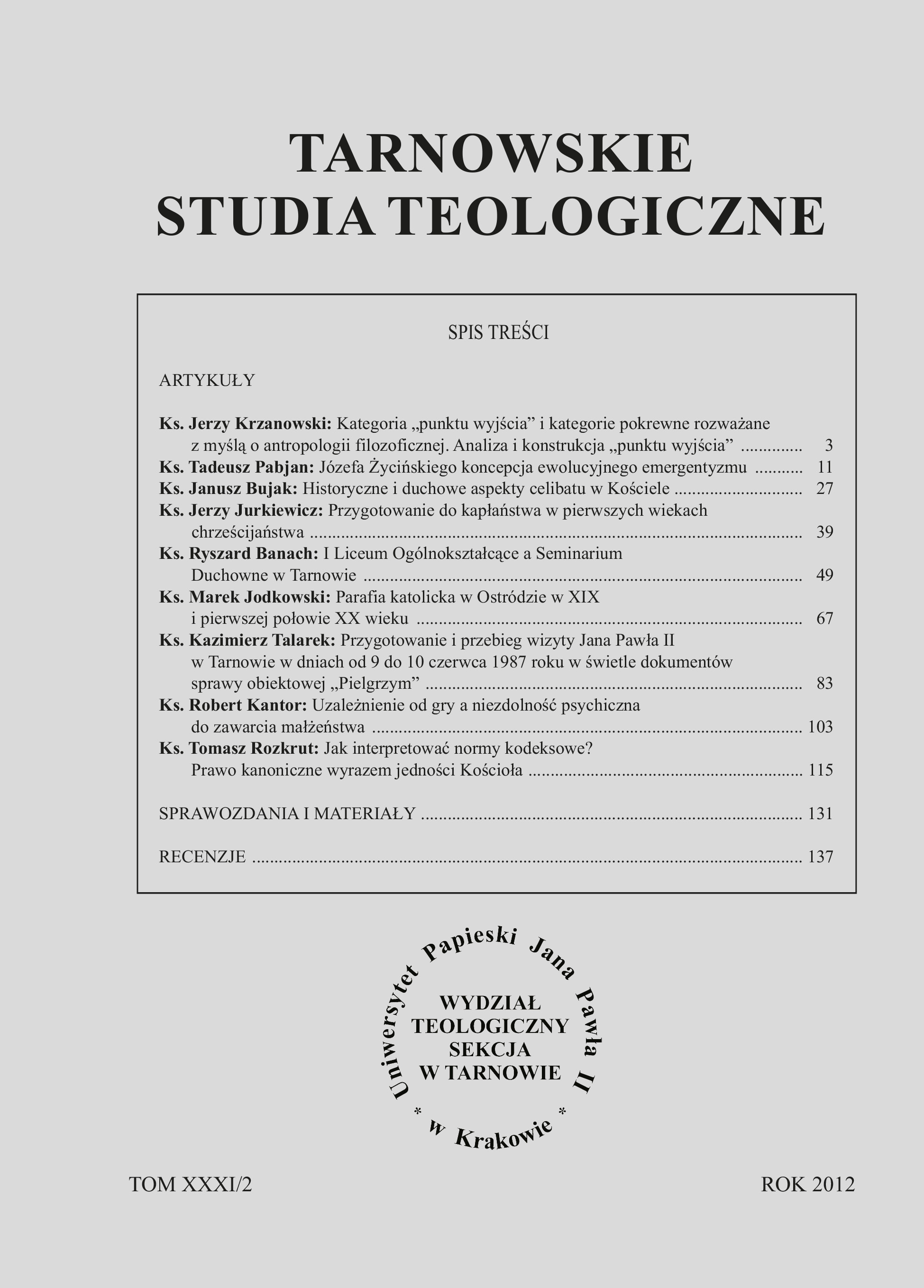How to Interpret the Norms of the Code? Canon Law as a Sign of the unity of the Church
DOI:
https://doi.org/10.15633/tts.295Keywords:
Roman Bishop, interpretation, unity, particular law, universal law, principlesAbstract
It is over a quarter of a century since the promulgation of the postconciliar Code of the Canon Law. The past time is characterized by insignificant revisions of the Code legislation introduced both by John Paul II as well as Benedict XVI. Daily life of the Church provides various information that canons of the Code of John Paul II are incessantly interpreted, mainly by judiciary of the Church as well as practice of the diocesan curias and parish offices; naturally it is necessary here to emphasize the considerable and dominant role in applying law by practice of the Roman Curia. Apart from this, it is essential to add the legislative action of particular diocesan bishops and conferences of bishops, among which the Italian Bishops’ Conference must be predominantly highlighted. Particular legislation issued by postconciliar particular and diocesan synods cannot be omitted; undoubtedly widely understood postconciliar monastic law also remains a specific collection of the canon law. The article discusses the aspect of an eventual possibility of changing the retirement age of the parish priest by a legislator, mainly by pointing out how to interpret the canons of the binding Code properly. This aspect is examined not unilaterally but in relation to two issues, i.e. regarding canonical marriage process and abovementioned matter concerning the eventual possibility of changing the retirement age of the parish priest. This is a short scientific reflection on the subject of interpretation of the norms of the Code, without critical reference to particular judicial as well as administrative and legal practice.Downloads
Published
2012-12-31
Issue
Section
Artykuły
License
Copyright (c) 2012 Tomasz Rozkrut

This work is licensed under a Creative Commons Attribution 4.0 International License.
Authors who publish with this journal agree to the following terms:
- Authors retain the copyright and full publishing rights without restrictions, and grant the journal right of first publication with the work simultaneously licensed under a Creative Commons Attribution 4.0 International License that allows others to share the work with an acknowledgement of the work's authorship and initial publication in this journal.
- Authors are able to enter into separate, additional contractual arrangements for the non-exclusive distribution of the journal's published version of the work (e.g., post it to an institutional repository or publish it in a book), with an acknowledgement of its initial publication in this journal.
- Authors are permitted and encouraged to post their work online (e.g., in institutional repositories or on their website) prior to and during the submission process, as it can lead to productive exchanges, as well as earlier and greater citation of published work (See The Effect of Open Access).

